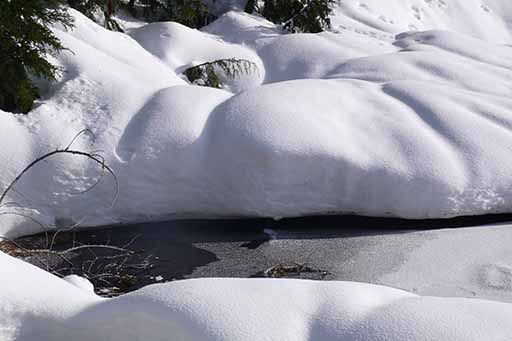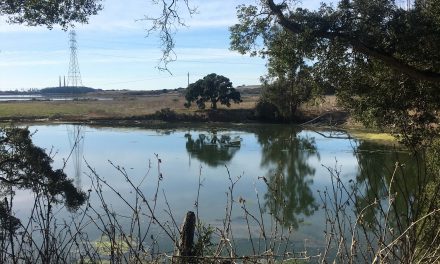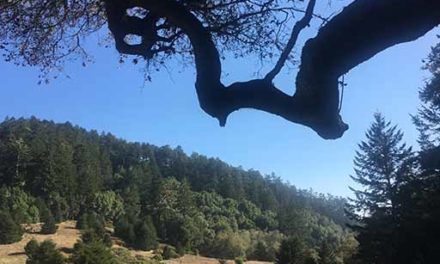Something to keep in mind…
If we are to have real hope
…
we must first accept reality.
…
There is no silver bullet.
…
People are working on effective and innovative solutions.
…
The world is finally beginning to act.
.
Tim Flannery
Atmosphere of Hope

EVERY TOOL WE HAVE MUST BE USED TO COMBAT CLIMATE BREAKDOWN
It recommends transitioning agriculture practices to be carbon sinks rather than carbon sources…
The world faces many challenges over the coming decades, but one of the most significant will be how to feed its expanding global population. By 2050, there will be about 10 billion of us, and how to feed us all, healthily and from sustainable food sources, is something that is … being looked at.
The study says that…
Food production is the largest cause of global environmental change. Agriculture occupies about 40% of global land, food production is responsible for up to 30% of global greenhouse-gas emissions and 70% of freshwater use.
The EAT-Lancet report specifically addresses how food production affects greenhouse gases…
Systems of food production release greenhouse gases (eg, carbon dioxide, methane, and nitrous oxide) into the atmosphere directly and drive land use change that releases additional carbon dioxide when forests are cleared, wetlands drained, and soils are tilled.
Food production is a prime source of methane, and nitrous oxide, which have 56 times and 280 times the global warming potential (over 20 years) of carbon dioxide, respectively.
Methane is produced during digestion in ruminant livestock, such as cows and sheep, or during anaerobic decomposition of organic material in flooded rice paddies. Nitrous oxide mainly arises from soil microbes in croplands and pastures and is affected by soil fertility management, such as fertiliser application.
Carbon dioxide is released by agricultural land from tillage of soils and during burning to clear land of plants, soil, organic matter, and agricultural residues, and from burning fossil fuels by farm machinery, for production of fertilisers, and in transport of agricultural products.
Carbon dioxide is also released when converting natural ecosystems, especially forests, to agriculture.

Food in the Anthropocene: the EAT–Lancet Commission on healthy diets from sustainable food systems recommends a planetary diet limiting red meat and refined foods and suggests a major dietary shift towards greens, nuts and legumes.
Their diet in a nutshell…
• Nuts – 50g a day
• Beans, chickpeas, lentils and other legumes – 75g a day
• Fish – 28g a day
• Eggs – 13g a day (so one and a bit a week)
• Meat – 14g a day of red meat and 29g a day of chicken
• Carbs – whole grains like bread and rice 232g a day and 50g a day of starchy vegetables
• Dairy – 250g – the equivalent of one glass of milk
• Vegetables -(300g) and fruit (200g)
The diet has room for 31g of sugar and about 50g worh of oils like olive oil.
Shifting to sustainable agriculture will provide healthier diets and feed more people…
Providing a growing global population with healthy diets from sustainable food systems is an immediate challenge.
…
Strong evidence indicates that food production is among the largest drivers of global environmental change by contributing to climate change, biodiversity loss, freshwater use, interference with the global nitrogen and phosphorus cycles, and land-system change (and chemical pollution, which is not assessed in this Commission).
Food production depends on continued functioning of biophysical systems and processes to regulate and maintain a stable Earth system.
…
Application of this framework to future projections of world development indicates that food systems can provide healthy diets (ie, reference diet) for an estimated global population of about 10 billion people by 2050 and remain within a safe operating space. However, even small increases in consumption of red meat or dairy foods would make this goal difficult or impossible to achieve.
They seek a “Great Food Transformation” and they have five strategies to accomplish this…
(1) Seek international and national commitment to shift towards healthy diets. …
(2) Re-orient agricultural priorities from producing high quantities of food to producing healthy food. …
(3) Sustainably intensify food production to increase high-quality output. …
(4) Strong and coordinated governance of land and oceans. …
(5) At least halve food losses and waste, in line with global sustainable development goals.
Finally, the key top-level points in their executive summary are: [heavily edited]
1. Unhealthy and unsustainably produced food poses the following risks
• many people have insufficient food and consume an unhealthy diet
• global food production is the largest pressure caused by humans on Earth
2. Current dietary trends, combined with projected population growth to about 10 billion by 2050, will exacerbate risks to people and planet
3. Adopting healthy diets from sustainable food systems is necessary to achieve the UN Sustainable Development Goals and the Paris Agreement
4. Healthy diets have
• an appropriate caloric intake
• consist of a diversity of
– plant-based foods,
– low amounts of animal source foods
– unsaturated rather than saturated fats
– small amounts of refined grains, processed foods, and added sugars.
5. Transformation will require dietary shifts
• including a greater than 50% reduction of unhealthy foods e.g.red meat and sugar,
• a greater than 100% increase in consumption of nuts, fruits, vegetables, and legumes.
6. Dietary changes could avert about 10·8–11·6 million deaths per year
7. Sustainable food production should
• use no additional land
• safeguard existing biodiversity
• reduce consumptive water use and manage water responsibly
• reduce nitrogen and phosphorus pollution
• produce zero carbon dioxide emissions
• cause no further increase in methane and nitrous oxide emissions.
8. Transformation to sustainable food production by 2050 will require implementation of agricultural mitigation options to reduce greenhouse-gas emissions
9. Achieving global targets for freshwater, climate, land, oceans, and biodiversity will be achieved through strong commitment to global partnerships and actions
10. Achieving healthy diets will require shifts towards
• healthy dietary patterns,
• large reductions in food losses and waste
• major improvements in food production practices.
Many articles about the EAT-Lancet report are published in the mainstream news… NYT, BBC, Psychology Today, Forbes
There are numerous other studies that address different aspects of meat consumption and Climate Breakdown. The BBC addressed this in 2015…
Can eating less meat help reduce climate change?
BBC November 24, 2015
the world’s rapidly growing herds of cattle [have been identified] as the greatest threat to the climate, forests and wildlife. And they are blamed for a host of other environmental crimes, from acid rain to the introduction of alien species, from producing deserts to creating dead zones in the oceans, from poisoning rivers and drinking water to destroying coral reefs.
…
Livestock are responsible for 18 per cent of the greenhouse gases that cause global warming, more than cars, planes and all other forms of transport put together. Burning fuel to produce fertiliser to grow feed, to produce meat and to transport it – and clearing vegetation for grazing – produces 9 per cent of all emissions of carbon dioxide, the most common greenhouse gas. And their wind and manure emit more than one third of emissions of another, methane, which warms the world 20 times faster than carbon dioxide.
Livestock also produces more than 100 other polluting gases, including more than two-thirds of the world’s emissions of ammonia, one of the main causes of acid rain. [from 12-10-06 Independent]
The livestock sector produces about 15% of global greenhouse gases, roughly equivalent to all the exhaust emissions of every car, train, ship and aircraft on the planet.
Researchers ranked shifting to a “plant-rich diet” as one of the most substantive, existing solutions to address climate change…
free from HARM January 19, 2019
More than 15,000 scientists from 184 countries agree that “promoting dietary shifts towards mostly plant-based foods” is among “examples of diverse and effective steps humanity can take to transition to sustainability.” Among their named causes of the “current trajectory of potentially catastrophic climate change due to rising GHGs” is “agricultural production— particularly from farming ruminants for meat consumption.”
Many other articles on livestock production from 2018 are archived here.
And there are a number other articles that have excellent information. This 2006 report is by the United Nations Food and Agriculture Organization. Bloomberg, The Guardian, Skeptical Science, The Independent all have articles about the impact of livestock production on Climate Breakdown.

HOT AIR NEWS ROUNDUP
Paul Beckwith and his cat Shackleton, named after the greatest polar explorer ever, hit it out of the ballpark again!
I join-the-dots on extreme events like Australia’s heat waves (50 C; 122 F), eastern North America and European deep freezes, torrential rains in Europe and California, accelerating ice melt from Greenland and Antarctica releasing methane, and huge insect kills in near-equator rainforests.
Part 1 [VIDEO]
Part 2 [VIDEO]
In Berlin 35,000 call for eco-sustainable harvests during Green Week
DW January 20, 2019
Tens of thousands of critics of industrialized farming have converged on Berlin to renew calls for shifts to eco-sustainable harvests. Visiting Berlin for its annual Green Week expo are 70 agriculture ministers.
Protesters called out by some 100 organizations asserted that alleviation of climate change and species depletion required a reorganization of EU farming policy, including subsidies, currently amounting to €60 billion ($68 billion) annually, including €6.3 billion allocated in Germany.
Pentagon Warns of Dire Risk to Bases, Troops From Climate Change
Bloomberg January 18, 2019
The U.S. Defense Department has issued a dire report on how climate change could affect the nation’s armed forces and security, warning that rising seas could inundate coastal bases and drought-fueled wildfires could endanger those that are inland.
The 22-page assessment delivered to Congress on Thursday says about two-thirds of 79 mission-essential military installations in the U.S. that were reviewed are vulnerable now or in the future to flooding and more than half are at risk from drought. About half also are at risk from wildfires, including the threat of mudslides and erosion from rains after the blazes.
“The effects of a changing climate are a national security issue with potential impacts to DOD missions, operational plans and installations,”
Americans Increasingly Say Climate Change Is Happening Now
Climate Change News January 23, 2019
Nearly half of Americans think people in the United States are being harmed by global warming “right now”—the highest point ever in a decade-long national survey called Climate Change in the American Mind.
The climate communications researchers who conducted the survey believe the results released Tuesday mark a shift in perceptions on the urgency of the climate crisis, with far-reaching implications for the politics of what should be done to address the issue.
Coal Ash Is Contaminating Groundwater in at least 22 States, Utility Reports Show
Inside Climate News January 18, 2019
The clearest picture yet of coal ash contamination in the United States is emerging, with utilities reporting serious groundwater contamination in at least 22 states.
At dozens of power plants across the country, including many in the Southeast, utilities have found coal-ash pollution severe enough to force them to propose cleanup plans. Those plans will likely become the next front in a decades-long battle over how to manage one of the nation’s largest industrial waste streams—one tainted by toxic heavy metals.
…
All power plants in South Carolina, for example, are removing the ash from their unlined ponds to prevent them from leaking pollution into nearby waterways. The governor of Virginia this month called for the complete removal of coal ash ponds within the Chesapeake Bay watershed. And environmental advocates have won rulings in state and federal courts, keeping the pressure on utilities to take action to protect human health and the environment.
Extreme heatwave: all-time temperature records fall across parts of Australia
The Guardian January 16, 2019
Temperature records have been broken in towns across parts of Australia sweltering through a heatwave, which is currently in its fourth day.
Australia also recorded its hottest December on record the Bureau of Meteorology said on Thursday in a special climate statement on “the unusual extended period of heatwaves” across much of the country.
December 27 was the hottest on record for nationally averaged mean maximum temperature (40.19C) and the second hottest day on record for any month.
Nine places in New South Wales broke temperature records on Wednesday – including six all-time records, according to the Bureau of Meteorology.
Climate Change Is Making Winter Colder in the Northeast
EcoWatch January 22, 2019
Paradoxically, frosty winter temperatures in some areas have been linked to rising temperatures around the globe. Climate change is distorting weather systems, yielding colder winter weather in parts of the world, including much of the U.S. One reason for this phenomenon is a weakening of the polar jet stream, the air current circling the Arctic.
The jet stream is the result of the difference in temperature between colder northern latitudes and temperate southern latitudes. Warm air from the equator is colliding with cold air from the Arctic, and a ribbon of powerful winds runs the length of the collision. Ushered along by the rotation of the Earth, this air current is moving west to east at speeds upwards of 200 miles per hour.
The jet stream is strongest in the winter months when the temperature difference between north and south is greatest.
Judge Dismisses Company’s Racketeering Claims Against Greenpeace
Inside Climate News January 23, 2019
A U.S. judge on Tuesday dismissed the most serious claims in a lawsuit brought by a Canadian logging company that accused Greenpeace and another advocacy group of running a criminal enterprise to damage the company.
The case, and a similar one filed later by the developer of the Dakota Access oil pipeline, had gained the attention of civil liberties and environmental advocacy organizations who warned it could set a dangerous precedent if it were allowed to proceed.
Ocean waves pack bigger and stronger punch
Climate News Network January 23, 2019
As the world’s seas warm, the ocean waves are starting to pack more power. Spanish scientists monitoring the tropical Atlantic report that the waves today contain more energy than they did 70 years ago. Sea surface temperatures influence wind patterns, and the payoff is a wave with more impact.
What this means for marine creatures, mariners, meteorologists and the mayors of seaside cities is not yet certain. But it does mean that wave energy could join carbon dioxide atmospheric ratios, global sea level rise and global air temperatures as yet one more metric of overall global warming and climate change.

PROTESTS • EXTINCTION REBELLION • RESISTANCE
Fridays For Future
Thousands Skip School Again to Go to Belgium Climate Protest
US News January 17,2019
BRUSSELS (AP) — More than 10,000 students skipped school again in Belgium to join a march demanding better protections of the globe’s fragile climate.
Swiss, German students protest inaction on climate change
ABC News January 19, 2019
Thousands of students held rallies Friday across Germany and Switzerland to protest the lack of action against climate change.
Irish youth demand climate action from Leinster House
Green News January 20, 2019
The Children’s Rally for Climate Action organised by Climate Case Ireland (CCI) comes just days before a high profile climate case against the Irish Government in the High Court.
‘Make love, not CO2’: Swiss students march for climate action
Yahoo News January 18, 2019
Geneva (AFP) – Thousands of school children and university students across Switzerland skipped class on Friday to march in the streets and demand climate action, telling politicians “There is no planet B”.
Despite vows from a number of school districts to show zero tolerance for those who missed class, pupils as young as 12 turned out across at least 15 Swiss cities and towns for the “climate strike.”
Greta Thunberg
Greta Thunberg’s Demand to Davos Elite: Act Urgently on Climate for ‘Sake of This Beautiful Living Planet”
Common Dreams January 23, 2019
Sixteen-year-old climate activist Greta Thunberg threw down the gauntlet to the global elite gathered in the Swiss Alps for the World Economic Forum (WEF) this week, urging them to work towards meaningful climate action in order to “safeguard the future living conditions for humankind.”
“Some people say that the climate crisis is something that we all have created. But that is just another convenient lie,” the Swedish teen says in a video posted to Twitter. The video was also posted on the WEF Facebook page and was intended to be shown to the attendees inside.
…
Thunberg posted the video a day ahead of her arrival—by train—in Davos, where she’ll take part in a panel discussion. Meanwhile, her joint op-ed with former United Nations climate chief Christiana Figueres declared it “outrageous” that the climate crisis is not taking center stage at the WEF gathering.
…
they believe “these are inspirational times for transformational change,” noting the historic Paris climate accord and global “school strike for climate,” which Thunberg catalyzed. Students around the world taking a stand for urgent climate action, they write, have declared that “they are unstoppable and that another world is possible.”
But to even begin taking a crack at the urgent crisis, they lay out a three-step “find and replace” exercise for Davos attendees:
Find coal, and replace it with renewable energy supported by storage.
Find internal combustion engines, and replace them with zero-emissions mobility.
Find crop burning (when farmers burn the stubble left over from the harvest to clear the ground quickly for new planting) and replace it with “no till” and “low till” technologies that enrich the soil instead of burning its nutrients.
Greta’s message to Devos…
Our leaders are behaving like children, but thankfully some of our children are stepping up and leading.
Watch @GretaThunberg call on delegates at this week’s World Economic Forum (#WEF19) to do #WhateverItTakes to address the climate crisis! pic.twitter.com/h6OfyC1bfw
— Greenpeace (@Greenpeace)
Greta Thunberg’s joint op-ed with former United Nations climate chief Christiana Figueres…
Davos, this is outrageous
Washington Post January 23, 2019
Climate change is an existential threat to humanity and already a matter of life and death for many, but it is just one issue among many on the agenda at this year’s World Economic Forum. It should be the number one priority and should sit at the center of every conversation in Davos.
This week, the two of us — from different generations but united by the same concern for our planet — will jointly address delegates at the summit. Climate change action has never been so urgent, as we are quickly approaching tipping points of no return. In that context, we will talk about leadership, outrage and optimism. We believe these are inspirational times for transformational change.
In Paris in 2015, the world’s governments agreed to hold global warming to well below 2 degrees Celsius above pre-industrial levels, while striving to keep the rise to 1.5 degrees by the second half of this century.
Extinction Rebellion
JOIN EX USA: on their website
Excellent read…
Extinction Rebellion isn’t about the Climate Change
Medium January 10, 2019
I’ve been with Extinction Rebellion (XR) from the start. I was one of the 15 people in April 2018 who came together and made the collective decision to try to create the conditions that would initiate a rebellion. I was a coordinator of one of the original five working groups, and I’ve been organising with XR day-and-night since then (frugally living off my savings so I don’t have to work, having quit an industry that paid me £1000/week). And I’ve been in RisingUp (the organisation from which XR has emerged) since the first RisingUp action in November 2016. I’m a RisingUp Holding Group member, and a member of the XR Guardianship Team.
And for the sake of transparency: that previous paragraph is all about me ‘pulling rank’ — I’m trying to convince you to listen to what I have to say…
And I’m here to say that XR isn’t about the climate. You see, the climate’s breakdown is a symptom of a toxic system of that has infected the ways we relate to each other as humans and to all life. This was exacerbated when European ‘civilisation’ was spread around the globe through cruelty and violence (especially) over the last 600 years of colonialism, although the roots of the infections go much further back.

ADAPTION AND RESILIENCE
Battery boom aids climate change battle
Climate News Network January 18, 2019
Billions of dollars are being invested worldwide in the developing battery boom, involving research into storage techniques to use the growing surpluses of cheap renewable energy now becoming available.
Recent developments in batteries are set to sweep aside the old arguments about renewables being intermittent, dismissing any need to continue building nuclear power plants and burning fossil fuels to act as a back-up when the wind does not blow, or the sun does not shine.
Batteries as large as the average family house and controlled by digital technology are being positioned across electricity networks. They are being charged when electricity is in surplus and therefore cheap, and the power they store is resold to the grid at a higher price during peak periods.
Interesting article…
4 Ways to Shift from Fossil Fuels to Clean Energy
World Resources Institute January 15, 2019
The world is vastly underestimating the benefits of acting on climate change. Recent research from the Global Commission on the Economy and Climate finds that bold climate action could deliver at least $26 trillion in economic benefits through 2030. This groundbreaking research, produced by the Global Commission and more than 200 experts, highlights proof points of the global shift to a low-carbon economy, and identifies ways to accelerate action in five sectors: energy, cities, food and land use, water and industry. Our blog series, The $26 Trillion Opportunity, explores these economic opportunities in greater detail.
This is a great website…
Canada: Vancouver passes climate emergency resolution
Climate Emergency Declaration January 17, 2019
On 16 January 2019 as the first Canadian city, Vancouver City Council voted unanimously to join 28 other cities around the globe – like London in England and Los Angeles in California – in declaring a climate emergency to match the urgency that scientists are reporting.
Vancouver is the eighth most populous city in Canada with a population of 631,486 people, according to its 2016 census.
Councillor Christine Boyle with the political party OneCity Vancouver moved a resolution supported by a majority of Council for the City of Vancouver to declare a climate emergency, direct staff to take immediate action to ramp up ambition in the city’s climate action plans, and embed an equity framework to prioritise vulnerable communities within those plans.
Climate emergency declarations cover 17 million citizens
Climate Emergency Declaration January 22, 2019
Populations covered by governments that have declared a climate emergency now exceed 17.5 million citizens in four English-speaking countries, with over 10 million of these living in the United Kingdom.
These are the overall figures, according to population statistics available via the Internet:
Australia: 8 councils, 623,715 persons
United Kingdom: 13 councils, 1 authority: 10,541,382 persons
USA: 7 councils, 5,696,536 persons
Canada: 1 council, 631,486 persons
Total: 30 local government bodies, 17,493,119 persons
…and counting. This figure keeps growing almost every week as more and more councils keep joining in.
All of these cities declared a climate emergency in January of 2019…
Climate Emergency Declaration January News 2019
United Kingdom: Kirklees Council passes climate emergency motion [VIDEO]
United Kingdom: Bradford District Council declares a climate emergency
United Kingdom: Scarborough Borough Council declares a climate emergency

WILDLIFE & THE ENVIRONMENT
New study demonstrates benefits of undervalued saltmarsh
PHYS ORG January 23, 2019
Saltmarshes can be found in sheltered coastal areas and are expanses of salt water tolerant grassland, exposed at low tide. The study shows that saltmarsh has a positive effect on the local and wider environment by providing an important habitat for wading birds, nursery grounds for fish, and natural flood defences.
Yet the habitat is in decline with around half being lost around the world because of sea level rise, changes to water nutrient levels from agricultural run-off, and land development.
Watch the video and be thrilled…
3 Newborn Endangered Right Whales Inspire Hope for Species
Eco Watch January 22, 2019
Right whale Catalog #2791 and her calf sighted 10 nautical miles off Fernandina Beach, Florida January 6. Florida Fish and Wildlife Conservation Commission
Whale watchers and researchers are rejoicing after a third North Atlantic right whale calf was documented this winter, especially after the previous calving season resulted in no confirmed births.
Antarctic krill: Key food source moves south
BBC January 21, 2019
Scientists say warming conditions in recent decades have led to the krill contracting poleward.
If the shift is maintained, it will have negative ecosystem impacts, they warn.
Already there is some evidence that macaroni penguins and fur seals may be finding it harder to get enough of the krill to support their populations.
An icy forecast for ringed seal populations
Science Daily January 23, 2019
Scientists have already observed and predicted that high ringed seal pup mortality rates are linked to poor environmental conditions like early ice breakup and low snow. Researchers have now gone a step further by coupling these hypotheses with forecasts of future spring snow and ice conditions, developing a mathematical model, and following it to some stark conclusions for populations off the Amundsen Gulf and Prince Albert Sound in Canada.
A hard story to read…
‘A sad day’: two more B.C. mountain caribou herds now locally extinct
The Narwhal January 23, 2019
Slocan valley farmer Jim Ross spotted an unusual convoy on Monday as he pulled into a gas station near Salmo in the afternoon twilight — three B.C. government trucks and a stock trailer with plywood tacked over the slats.
Intrigued, Ross asked the government employees what kind of animal was in the trailer while they filled up their vehicles at the snowy Centex station. He didn’t get an answer, so he asked again. And again.
“They all looked like deer in the headlights and behaved like they were on some secret mission,” Ross wrote that evening in a Facebook post. “When I wouldn’t stop pressing, the driver told me they were caribou.”
Inside the stock trailer were two female caribou and a male — three of the last survivors of two highly endangered caribou herds in southeastern B.C. known as the South Selkirk and South Purcell subpopulations.
Coastal seas around New Zealand are heading into a marine heatwave, again
PHYS ORG January 23, 2019
Seasonal forecasting a few months ahead is difficult. It falls between weather and climate predictions. In a collaboration between the National Institute of Water and Atmospheric Research and the Australian Bureau of Meteorology, we are examining how well long-term forecasts of ocean conditions around New Zealand stack up. Early forecasts suggested this summer would not be as warm as last year. But it now looks like this summer will again be very warm in the ocean.
One of the important points to keep in mind is that when we are at the beach, we are sampling only the surface temperature. The same is true of satellites – they monitor less than the top millimetre of the ocean.
Sea surface temperatures are several degrees above normal at the moment. But in deeper waters, because of the high heat content of water, even a tenth of a degree is significant. Temperature in the deeper ocean is monitored by a network of moored buoys on and off the continental shelf along the Australian coast. New Zealand has almost nothing that would be comparable.
Climate change kills 98% insects in Puerto Rico’s rainforest: study
Down to Earth October 17, 2018
A research paper published in the journal Proceedings of the National Academy of Sciences on October 15 says that researchers landed at this number after noticing the number of insects in the sticky traps they put up under forest’s canopy between 1976-77 and 2012-13.
When scientists recovered samples from the forest floor they observed that insects had decreased by four to eight times within this period. They used a measurement of insect biomass in milligrams to estimate the change in number of these organisms.
Earlier, studies had predicted a 20 per cent decrease in insects owing to climate change. The current study shows a parallel decrease in the number of animals that feed on insects like lizards, frogs and birds. For example, the number of Yellow chinned Anole lizards, which are commonly found in the area, had decreased by 25 per cent and the green-coloured Emerald Anole lizard had reduced by 91 per cent.
The study also finds that the rainforest’s temperature has increased by 2 degree Celsius in the past 30 years

CLIMATE STUDIES
Paul Beckwith unpacks this in his video above…
Greenland ice melting four times faster than in 2003, study finds
EurekAlert! January 17, 2019
Scientists concerned about sea level rise have long focused on Greenland’s southeast and northwest regions, where large glaciers stream iceberg-sized chunks of ice into the Atlantic Ocean. Those chunks float away, eventually melting. But a new study published Jan. 21 in the Proceedings of the National Academy of Sciences found that the largest sustained ice loss from early 2003 to mid-2013 came from Greenland’s southwest region, which is mostly devoid of large glaciers.
…
“We knew we had one big problem with increasing rates of ice discharge by some large outlet glaciers,” he said. “But now we recognize a second serious problem: Increasingly, large amounts of ice mass are going to leave as meltwater, as rivers that flow into the sea.”
The findings could have serious implications for coastal U.S. cities, including New York and Miami, as well as island nations that are particularly vulnerable to rising sea levels.
And there is no turning back, Bevis said.
“The only thing we can do is adapt and mitigate further global warming–it’s too late for there to be no effect,” he said. “This is going to cause additional sea level rise. We are watching the ice sheet hit a tipping point.”
This same story is reported at many other sites… Greenland’s ice melting faster than scientists previously thought – study
The Guardian January 20, 2019
Greenland’s ice is melting faster than scientists previously thought, with the pace of ice loss increasing fourfold since 2003, new research has found.
Enormous glaciers in Greenland are depositing ever larger chunks of ice into the Atlantic Ocean, where it melts. But scientists have found that the largest ice loss in the decade from 2003 actually occurred in the south-west region of the island, which is largely glacier-free.
This suggests surface ice is simply melting as global temperatures rise, causing gushing rivers of meltwater to flow into the ocean and push up sea levels. South-west Greenland, not previously thought of as a source of woe for coastal cities, is set to “become a major future contributor to sea level rise”, the research states.
Climate change tipping point could be coming sooner than we think
Science Daily January 23, 2010
A new study confirms the urgency to tackle climate change. While it’s known that extreme weather events can affect the year-to-year variability in carbon uptake, and some researchers have suggested that there may be longer-term effects, this study is the first to actually quantify the effects through the 21st century and demonstrates that wetter-than-normal years do not compensate for losses in carbon uptake during dryer-than-normal years, caused by events such as droughts or heatwaves.
Study predicts how air pollutants from US forest soils will increase with climate change
PHYS ORG January 22, 2018
A study from Indiana University has found that trees influence whether soil can remove or emit gases that cause smog, acid rain and respiratory problems.
The chemicals, collectively known as reactive nitrogen oxides, are produced by soil bacteria that feed on naturally occurring ammonium—as well as nitrogen fertilizers from industrial and agricultural sources that enter soil from the atmosphere.
Climate-Driven Fires Could Turn Yellowstone Forests to Grassland By Midcentury
State of the Planet January 17, 2019
A new study just published in the journal Ecological Monographs shows that some of Yellowstone’s forests may now be at a tipping point, and could be replaced by grassland by the middle of this century.
…
Large fires are no longer a rarity in the West, in large part due to warming temperatures. Yellowstone is nearly 2 degrees Fahrenheit warmer on average than it was just 60 years ago. The park’s forests may be at the brink of abrupt change, where their resilience may suddenly be overwhelmed, say the researchers. “Fires are being driven by hot, dry conditions and these are trends that are expected to continue,”
…
the study found that seedlings of both tree species established themselves and survived only in high-elevation plots, where surface temperatures were between 52.5 and 59 degrees Fahrenheit. At the low-elevation plots, soil temperatures regularly exceeded this range, and the soils dried. More than 90 percent of the seeds never sprouted, and those that did died within three years.
Equivalencies:
• 1 gigatonne = one billion tons
• 1 gigatonne of carbon = 3.67 gigatonnes of CO2
• 1 part per million of atmospheric CO2 = 7.81 gigatonnes of CO2
• 1 part per million of atmospheric carbon = 2.13 gigatonnes of carbon
Global Warnings
Paul Beckwith: “I declare a global climate change emergency to claw back up the rock face to attempt to regain system stability, or face an untenable calamity of biblical proportions.”
Kevin Hester: “There is no past analogue for the rapidity of what we are baring witness to. There has been a flood of articles … 2C is no longer attainable and that we are heading for dangerous climate change”
Guy McPherson: “The recent and near-future rises in temperature are occurring and will occur at least an order of magnitude faster than the worst of all prior Mass Extinctions. Habitat for human animals is disappearing throughout the world, and abrupt climate change has barely begun.”
Magi Amma: We need to turn on a dime at mach nine!





